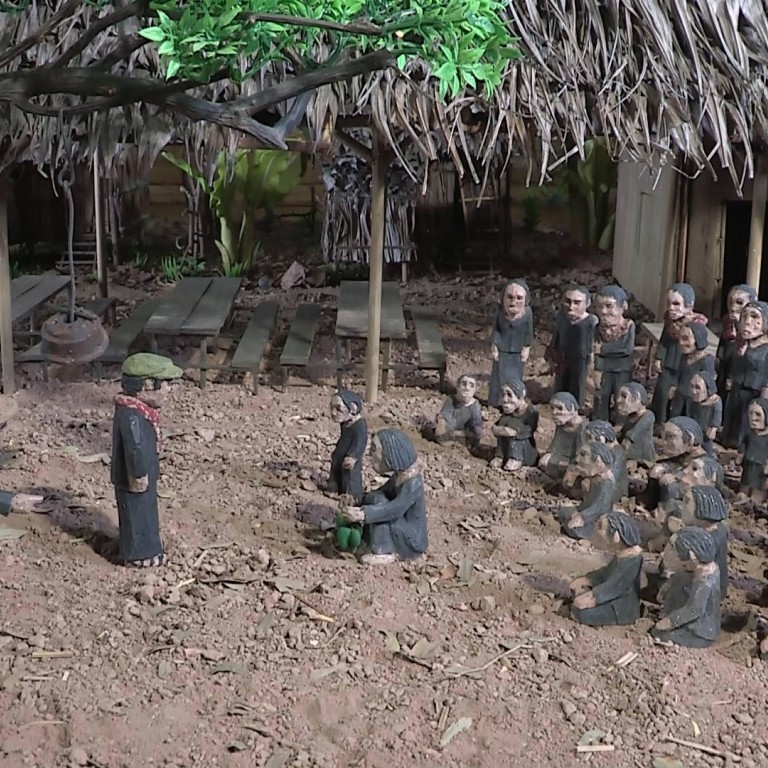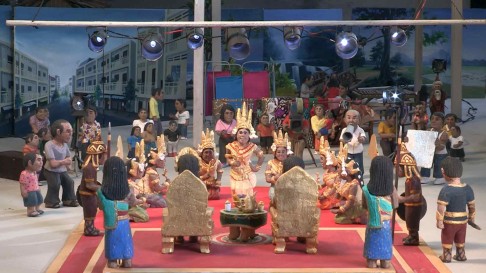
Film review: The Missing Picture is a reminder of Khmer Rouge atrocities
"Those who cannot remember the past are condemned to repeat it," goes an oft quoted saying by philosopher George Santayana. With more than half of Cambodia's present population having been born after the Khmer Rouge's nightmare rule came to an end, films like Rithy Panh's remind the Southeast Asian country's citizens, and the world at large, of the horror that befell its people between 1975 and 1979.
Narrator: Randal Douc
Director: Rithy Panh
Category: I (French)

"Those who cannot remember the past are condemned to repeat it," goes an oft quoted saying by philosopher George Santayana. With more than half of Cambodia's present population having been born after the Khmer Rouge's nightmare rule came to an end, films like Rithy Panh's remind the Southeast Asian country's citizens, and the world at large, of the horror that befell its people between 1975 and 1979.
A child living with his family in Phnom Penh when the genocidal regime took control of the country, the Cambodian-French filmmaker lost his brother on April 17, 1975, the day the Khmer Rouge forcibly emptied the capital city, driving its population of more than two million people out into the countryside.
Those who survived the de facto death march went on to a veritable living hell, one which saw the deaths of close to a quarter of Cambodia's population in just four years.
Somehow able to defy the odds and stay alive, Rithy Panh has crafted a documentary that recounts the horrific suffering of those living in the "rehabilitation camps" of what was supposed to be a communist utopia where everyone was equal, but where many were far worse off than the regime's leaders and soldiers.
A moving memoir of a man unable to forget what he experienced during that terrible time, this documentary is made all the more heartbreaking by its director-writer-editor sharing stories of the fate of his family, particularly his parents, along with memories of happier times.

Without any photographs or personal effects to remember them by (since, under the Khmer Rouge, the vast majority of Cambodians were not allowed to own anything other than their dyed-black clothes and a spoon), Panh employs clay figurines (hand-carved and painted by Sarith Mang) to represent individual family members, himself and others, including the felt hat-wearing commandant of a particularly brutal camp.
They may look crude, but when placed within detailed settings, they make for remarkably evocative dioramas depicting the regime's topography of terror.
also has film footage shot before 1975, including a beautiful traditional dance performance, along with Khmer Rouge propaganda movie excerpts and less "ideal" images filmed by Ang Sarun, a cameraman who was later tortured and executed by the regime.
Some of the "live action" footage appears more surreal than that featuring the clay figurines. A segment where thousands of people walk about in semi-circles, burdened with rocks — which also featured in another of Panh's works chronicling Khmer Rouge atrocities, (2012) — is unbelievable for its sheer scale.
Although the film is narrated by Randal Douc rather than Panh himself, the filmmaker's voice comes across loud and clear in , as does his messages of "Never forget", and "A picture can be stolen, a thought cannot".
